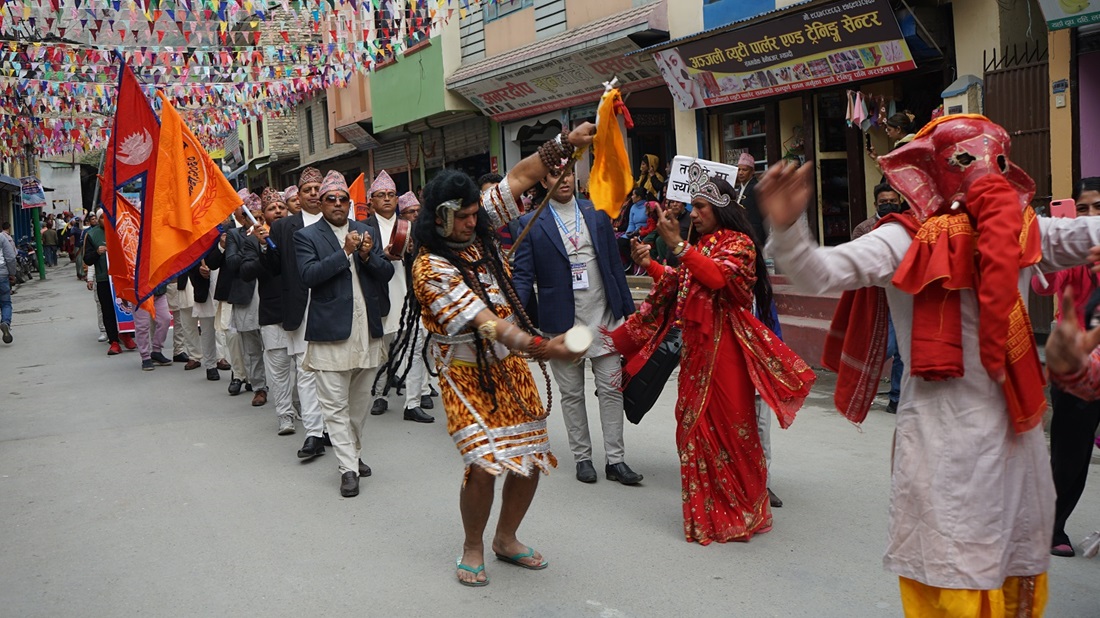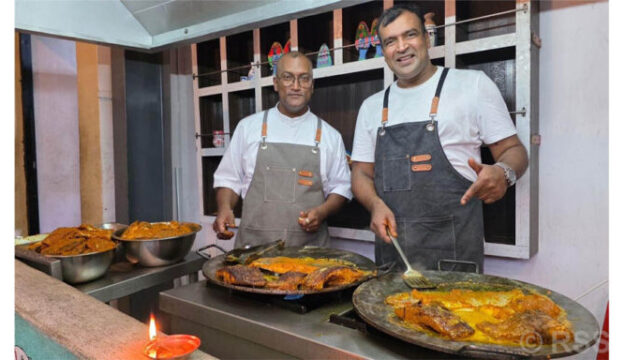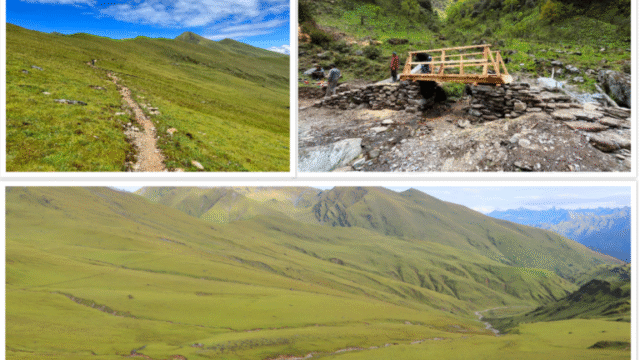Radha Krishna dance is being preserved by the locals of Takam village to protect their cultural heritage. In a dedicated effort to preserve their cultural heritage, locals of Takam village, located in Dhaulagiri Rural Municipality–7 in Myagdi, have taken active steps to protect and promote the traditional ‘Radha Krishna Dance’, a unique form of cultural expression rooted in the region.
Nestled in the lap of the Himalayas and situated on a scenic plateau, Takam village has a history of performing the Radha Krishna Dance since its early settlement. Accompanied by devotional songs and dramatic performances, this dance form holds both religious and cultural significance for the locals.
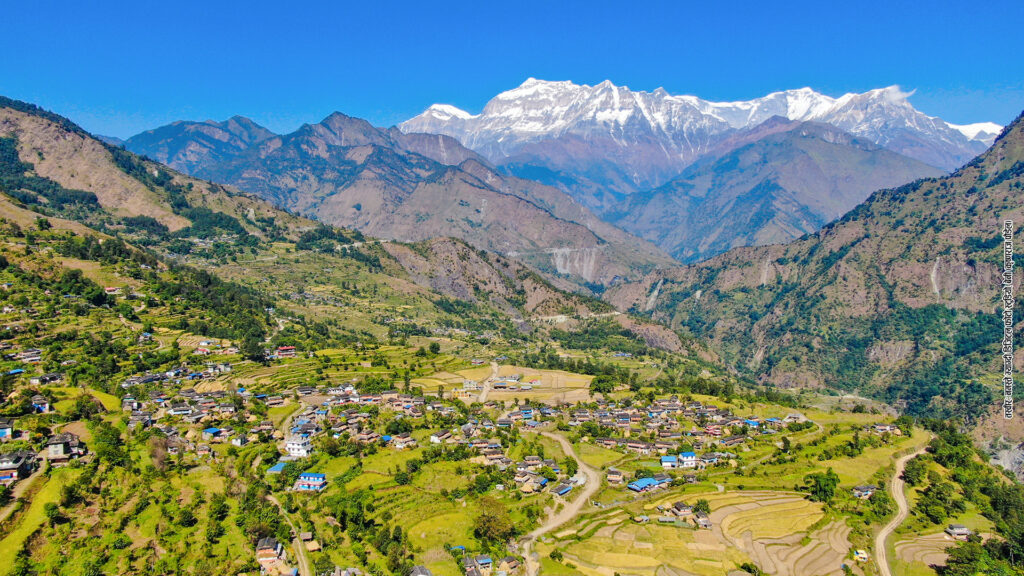
Radha Krishna Dance
To safeguard the tradition, villagers have formed the ‘Takam Religious Theatrical Group’, which is working to pass down the art to younger generations, according to local artist Rishiram Subedi. “This dance is considered a cultural identity of the region, dating back nearly 200 years. Traditionally, it is performed every year during Haritalika Teej as part of the village festival. Now, it’s being showcased during other festivals and public celebrations as well,” Subedi shared.

The group has also composed devotional songs in a bhajan-kirtan style specifically for the dance. The Radha Krishna Dance combines song, drama, and expressive dance to portray tales of Hindu deities such as Lord Shiva, Parvati, Radha, Krishna, Lord Ganesh, and even comic characters like jokers or villains. The performance illustrates divine love and spiritual philosophy, making it both entertaining and spiritually enriching.
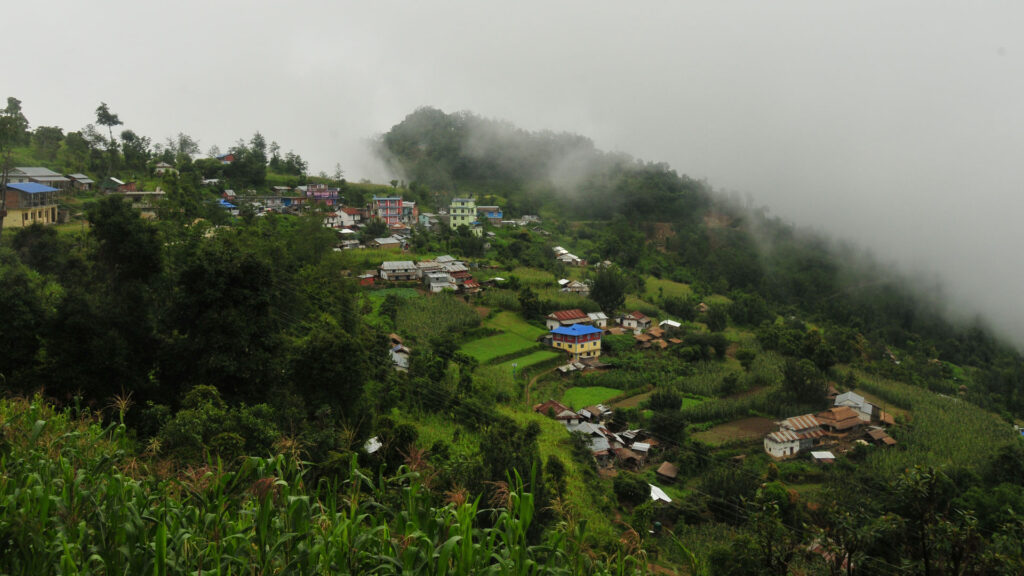
According to Netra Subedi, secretary of the Takam Religious Theatrical Group, the involvement of younger generations has begun to ensure the preservation of the dance for future generations. “In recent times, the dance has been featured at various festivals, public events, and ceremonies. It was also a crowd favorite during a recent ancestral dance competition organized by the rural municipality,” he added.
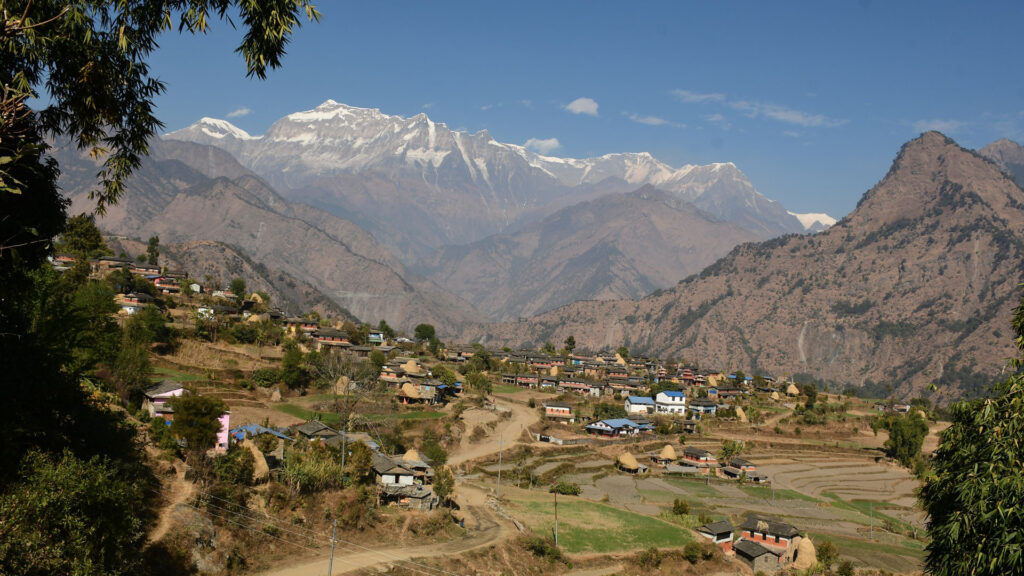
The rural municipality’s active role in cultural preservation is seen as a valuable contribution to cultural continuity and tourism promotion, Subedi noted. Interestingly, all the performers in the Radha Krishna Dance are male, with even the roles of Radha and Parvati played by male artists.
Now, the dance is being performed not only in Takam village but also in nearby areas, including the district headquarters of Beni. As Takam gains recognition as a tourist destination along the Dhaulagiri trekking route, there is growing hope that the Radha Krishna Dance will serve as a unique attraction for cultural tourism.
